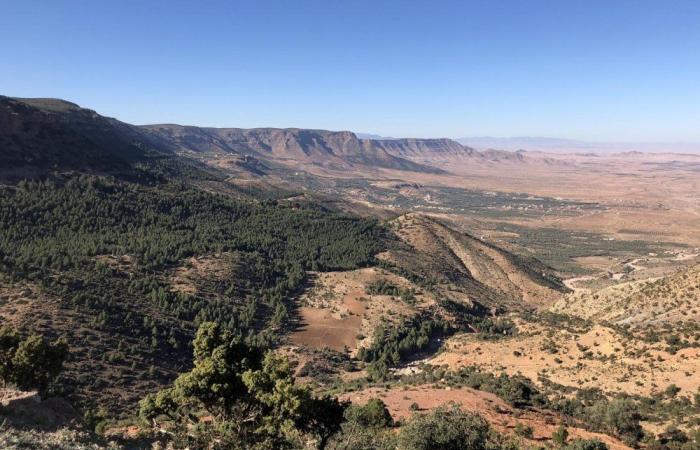The Moroccan basement has not yet delivered all its secrets. Between the hopes of a gas potential And the often complex reality of geological formations, researchers must be ingenuity to better understand what is hidden in depth. It is in this perspective that a Moroccan team of researchers, mainly attached to theMohammed Premier University of Oujdahas taken an unprecedented step. Composed of geologists, specialists in modeling and data scientiststhis team brought together additional skills to apply advanced artificial intelligence techniques to study the basement. For the first time, Artificial intelligence (IA) was used to predict the types of rocks present in a tank, without the need to extract them.
The study, published in March 2025 in the journal “Journal of African Earth Sciences“, Was interested in the basin of Tendrara-Missourlocated in the extreme east of the country, not far from the Algerian border. In this region, the so -called tagi training (Lower clay trias) is known for its potential in natural gas. But the analysis of the drilling carrots of the physical samples extracted from the basement remains rare, expensive and limited to only a few tens of meters. The researchers therefore attempted another path: reconstructing the nature of the rocks from the data recorded during boreholes, such as the density of materials or their response to sound waves.
87% precision for the AI model
Concretely, scientists have tested three models of artificial intelligence, including a network of multilayer neurons, a technique capable of identifying complex relationships between data. The goal was to predict, on 417 meters of non -caroted sections, the type of rock present: sandstone, pebble sandstones, conglomerate or argile-siltstone. The results are impressive: the model -based model of neurons has reached 87% precision, much more than the other two approaches tested (82% for the Random Forest algorithm, and 44% for the analysis in clusters).
This performance made it possible to reconstruct the geological structure of the reservoir with an unprecedented level of detail, revealing in particular rapid variations of the types of rocks from one well to another, typical of an old river environment. According to the authors, this method not only saves time and money, but also to better orient exploration decisions. “Our results show that artificial intelligence can offer a reliable alternative to carrot analysis, especially in little carotted areas,” they explain in the article.
A lever for the Moroccan energy sector
This advance could have important implications for the energy future of Morocco. The country seeks to diversify its energy sources and better value its basement, especially in terms of natural gas. Indeed, the Morocco Mines 2025-2030 plan aims to triple the turnover of the mining sector, more than 15 billion dirhams, and to multiply by ten exploration investments to reach almost 4 billion dirhams, while doubling the number of direct jobs to bring them to more than 30,000. However, many sedimentary basins-in the Oriental, the Gharb and the South-remain under-explored, even thousands of meters of boreholes have already been made over the decades. Using AI to analyze existing data, Morocco could therefore accelerate its geological understanding, without multiplying the costly drilling campaigns. The study was also carried out in partnership with the company Sound Energy, active in the Tendrara region, and shows how collaborations between public research and private sector can bring out concrete solutions.
Researchers now recommend associating these models with seismic data, to produce even more precise three -dimensional cards of tanks. This type of integrated approach would better target the most promising areas, while reducing the financial risks linked to exploration. The AI therefore does not replace human expertise, but it opens up new horizons. By revealing the effectiveness of these tools in a concrete context like that of Tendrara, this study opens the way to an in -depth transformation of exploration practices in Morocco. It remains to be seen whether the institutions and operators will be able to seize it on a large scale.








